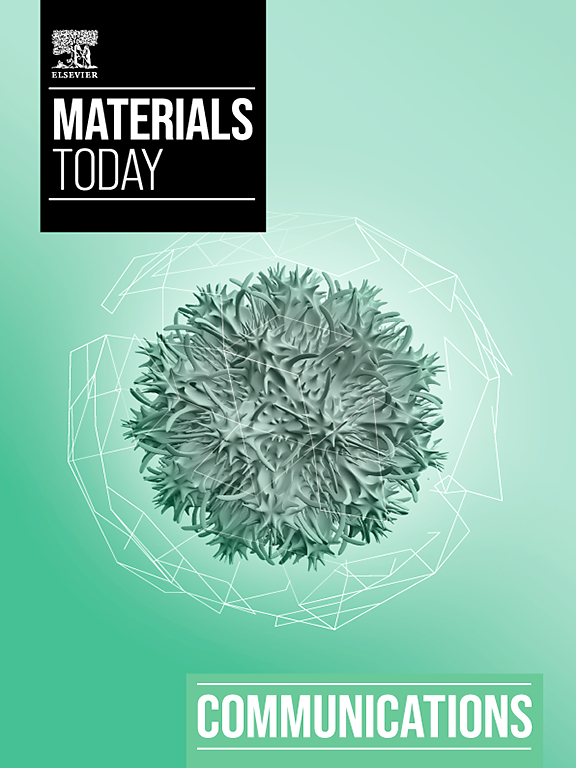Investigation of sliding wear, electrochemical corrosion, and biocompatibility of Ti-Nb alloys for biomedical applications
IF 4.5
3区 材料科学
Q2 MATERIALS SCIENCE, MULTIDISCIPLINARY
引用次数: 0
Abstract
This research emphasizes the development of biocompatible Ti-xNb (0, 5, 10, 15, 20, and 25 wt.%) alloys through powder metallurgy to attain a lower elastic modulus, high strength, low wear, and high corrosion resistance appropriate for biomedical implants. The developed alloys were comprehensively analyzed through microstructural, physical, mechanical, electrochemical, biological, and tribological investigations to assess their suitability by comparing their properties with commercially pure titanium (cpTi). The outcomes demonstrate, powder metallurgy is an effective route for developing Ti-Nb alloys with several desirable properties. Incorporating niobium (Nb) into titanium (Ti) introduces the β phase within the alloys, which increases with Nb concentration and contributes to decreasing the elastic modulus to as low as 43.47 ± 4.9 GPa. All Ti-Nb alloys exhibits higher hardness and compressive strength than cpTi, with values of 403.23 ± 21.38 HV and 1322.45 ± 25.64 MPa obtained for the Ti-10Nb alloy. A lower concentration of Nb shows comparable corrosion resistance of the Ti-Nb alloys to cpTi, whereas a higher Nb concentration is unfavorable. Furthermore, the tribological findings demonstrate superior antifriction and antiwear properties in all Ti-Nb alloys compared to cpTi. Notably, Ti-10Nb displays outstanding wear resistance with a 41.82% lower friction coefficient in dry conditions and 31.11% in simulated body fluid (SBF), along with 81.08% reduction in wear volume in dry conditions and 63.11% in SBF compared to cpTi. Among all developed alloys, Ti-10Nb exhibits various desired properties, suggesting its potential as an alternative to cpTi for biomedical implant applications.用于生物医学应用的钛铌合金的滑动磨损、电化学腐蚀和生物相容性研究
本研究强调通过粉末冶金技术开发生物相容性钛-铌(0、5、10、15、20 和 25 wt.%)合金,以获得适合生物医学植入物的低弹性模量、高强度、低磨损和高耐腐蚀性。通过微观结构、物理、机械、电化学、生物和摩擦学研究对所开发的合金进行了全面分析,并将其性能与商用纯钛(cpTi)进行比较,以评估其适用性。研究结果表明,粉末冶金是开发具有多种理想特性的钛铌合金的有效途径。在钛 (Ti) 中加入铌 (Nb) 会在合金中引入 β 相,该相随 Nb 浓度的增加而增加,并导致弹性模量降低至 43.47 ± 4.9 GPa。所有 Ti-Nb 合金的硬度和抗压强度都高于 cpTi,Ti-10Nb 合金的硬度和抗压强度分别为 403.23 ± 21.38 HV 和 1322.45 ± 25.64 MPa。较低浓度的铌表明 Ti-Nb 合金的耐腐蚀性与 cpTi 相当,而较高浓度的铌则不利。此外,摩擦学研究结果表明,与 cpTi 相比,所有 Ti-Nb 合金都具有更优越的抗摩擦和抗磨损性能。值得注意的是,与 cpTi 相比,Ti-10Nb 具有出色的耐磨性,其摩擦系数在干燥条件下降低了 41.82%,在模拟体液(SBF)中降低了 31.11%,磨损体积在干燥条件下减少了 81.08%,在模拟体液中减少了 63.11%。在所有开发的合金中,Ti-10Nb 表现出了各种理想的特性,这表明它有潜力成为生物医学植入应用中 cpTi 的替代品。
本文章由计算机程序翻译,如有差异,请以英文原文为准。
求助全文
约1分钟内获得全文
求助全文
来源期刊

Materials Today Communications
Materials Science-General Materials Science
CiteScore
5.20
自引率
5.30%
发文量
1783
审稿时长
51 days
期刊介绍:
Materials Today Communications is a primary research journal covering all areas of materials science. The journal offers the materials community an innovative, efficient and flexible route for the publication of original research which has not found the right home on first submission.
 求助内容:
求助内容: 应助结果提醒方式:
应助结果提醒方式:


